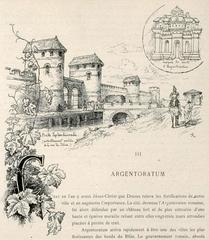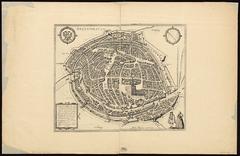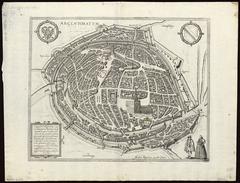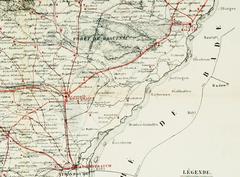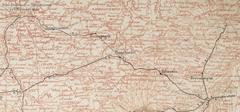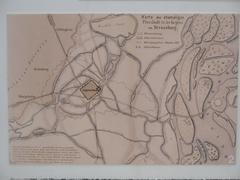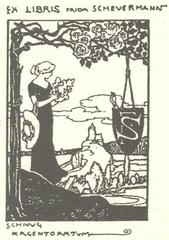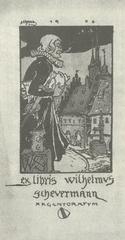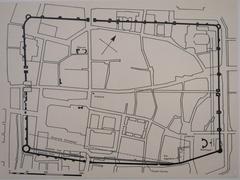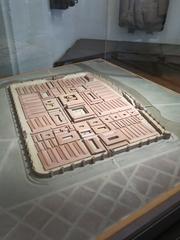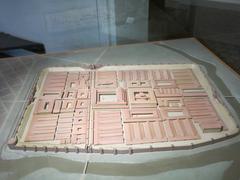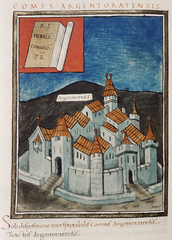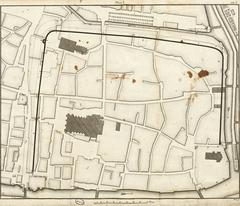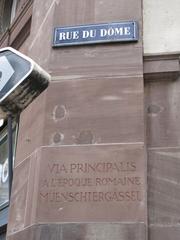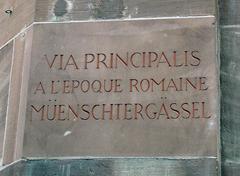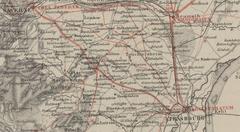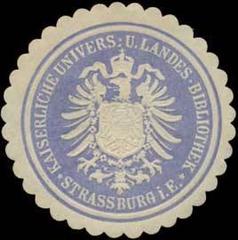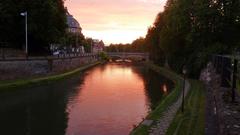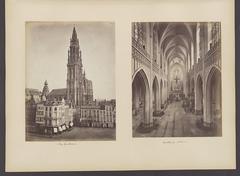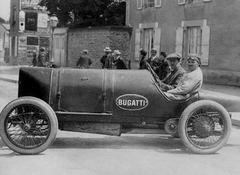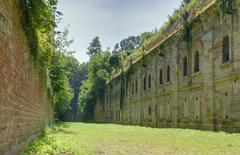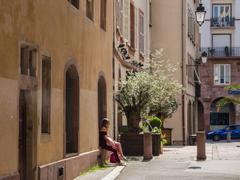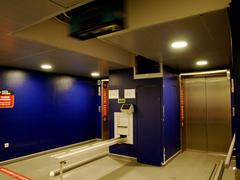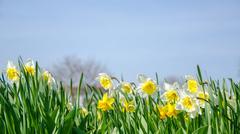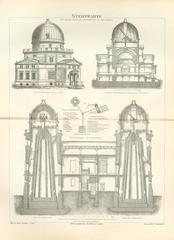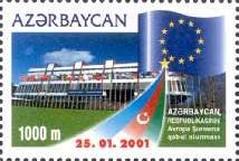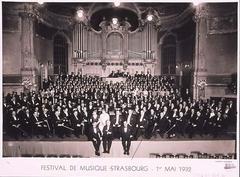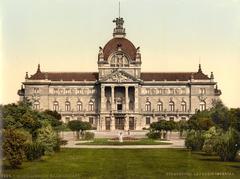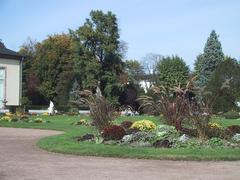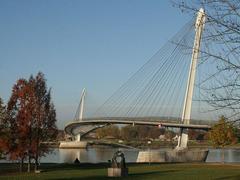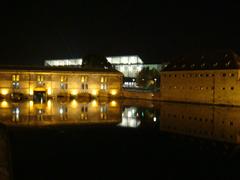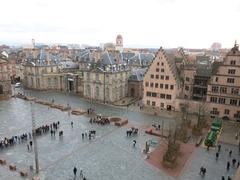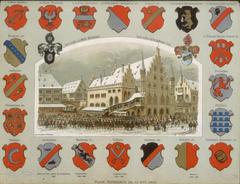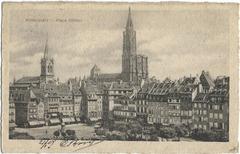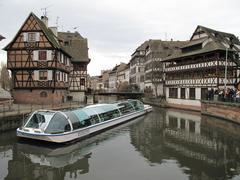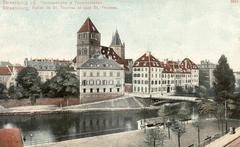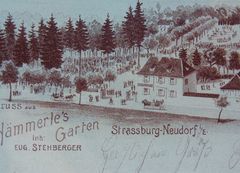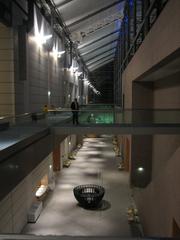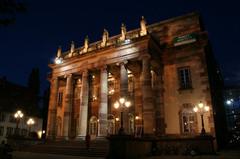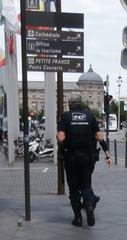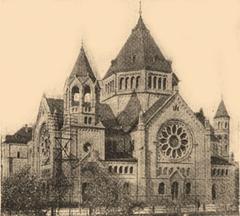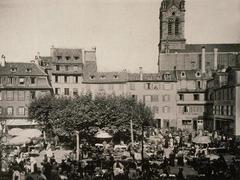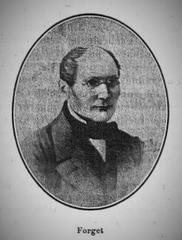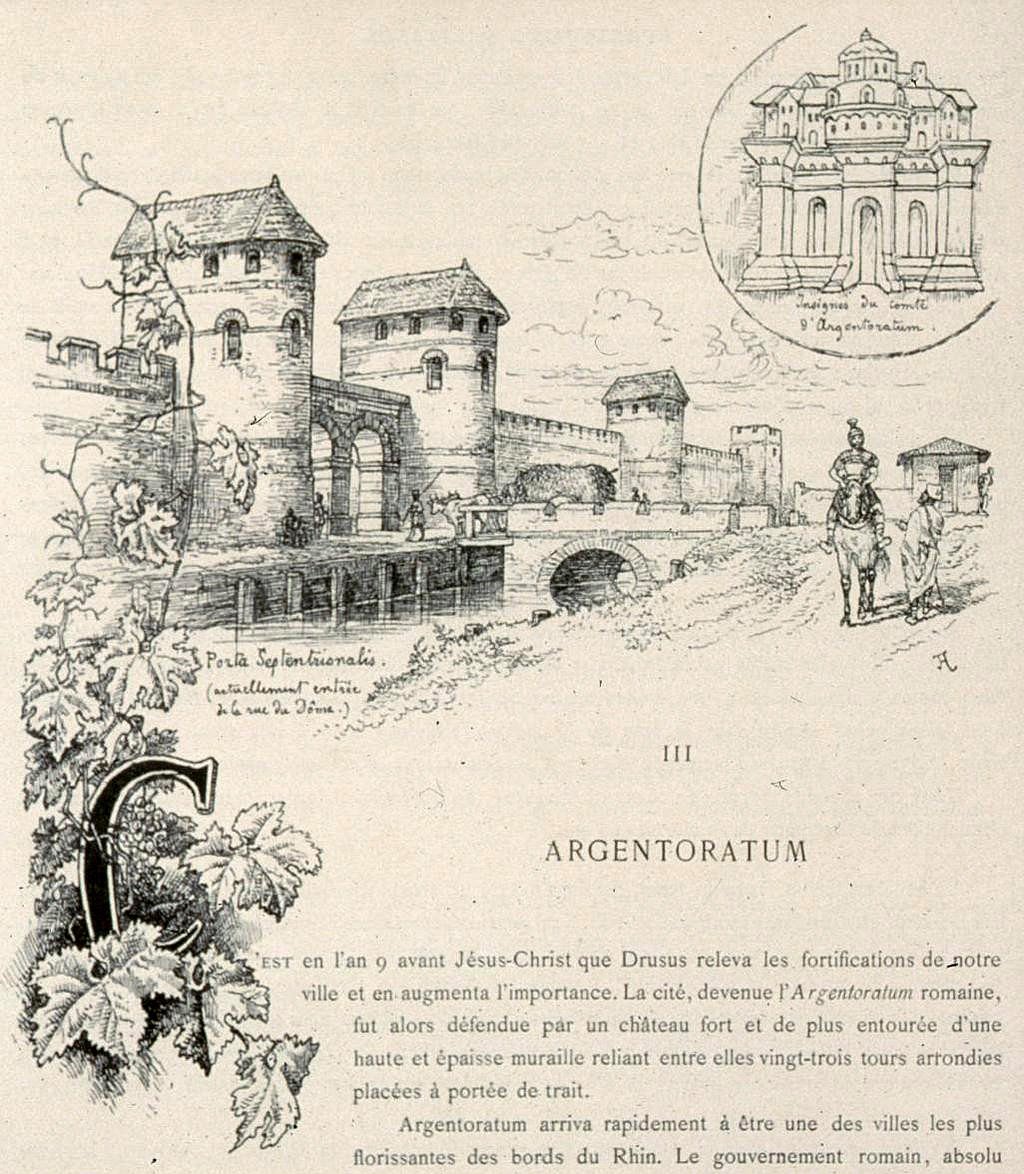
Argentoratum Strasbourg Visiting Hours, Tickets, and Historical Sites Guide
Date: 14/06/2025
Introduction to Argentoratum Strasbourg: History and Significance
Strasbourg, formerly known as Argentoratum, sits on the banks of the Ill River near the Rhine, embodying a tapestry of European history, culture, and architecture. Its origins trace back to a Celtic settlement, which became a Roman military outpost in 12 BCE. Over the centuries, Strasbourg has evolved through periods of medieval autonomy, Renaissance humanism, and Baroque grandeur, weathering wars and political change to develop a unique Franco-German identity. Today, its historic center, La Grande Île, is a UNESCO World Heritage Site, famed for its harmonious blend of Roman, Gothic, Renaissance, and Baroque architecture. The Strasbourg Cathedral, with its soaring spire and intricate astronomical clock, stands as a testament to the city’s architectural grandeur.
This guide offers a comprehensive overview of Strasbourg’s history, key sites, visitor information, and travel tips. It draws on authoritative sources to ensure you can explore the city’s historical and cultural treasures with confidence. For official updates and further details, consult resources such as the Official Strasbourg Tourism Website, Strasbourg Cathedral Official Site, and the Argentoratum Historical Resource.
Contents
- Introduction and Historical Overview
- Key Historical Periods
- UNESCO World Heritage and Architectural Legacy
- Major Historical Sites
- Visiting Hours and Ticket Information
- Practical Visitor Tips
- Unique Experiences and Seasonal Events
- Essential FAQs
- Useful Links
- References
Historical Overview
Pre-Roman and Celtic Foundations
Human settlement in the Strasbourg area dates back millennia. Archaeological evidence reveals continuous habitation and agricultural activity for at least 5,000 years before the Roman era. The Celts established the village of Argentorate on fertile alluvial plains, making it a hub for agriculture, fishing, metallurgy, and trade. Far from being a wild, uninhabited forest, pre-Roman Strasbourg was an active center with connections across Central Europe and the Black Sea (Argentoratum Historical Resource).
Roman Establishment: Argentoratum
In 12 BCE, the Romans, led by Nero Claudius Drusus, fortified Argentoratum as a strategic military outpost on the Rhine frontier. The site rapidly became a center for trade and cultural exchange, and Roman fortifications and road layouts still influence Strasbourg’s urban fabric today. Archaeological finds—including coins, pottery, and building foundations—attest to Argentoratum’s importance as a Roman crossroads (Britannica).
Medieval Transformation and Urban Flourishing
During the Middle Ages, Argentoratum evolved into Strasbourg, gaining status as a free city within the Holy Roman Empire in 1262. Its autonomy fostered economic growth, and the city’s location along the Rhine established it as a commercial hub. The construction of Strasbourg Cathedral, begun in 1015 and completed in 1439, marked the city’s emergence as a center of Gothic architecture and religious significance. Many medieval civic buildings, monasteries, and churches still define the cityscape of the Grande Île (Britannica).
Renaissance, Reformation, and Intellectual Influence
Strasbourg flourished as a center of humanism and the early printing industry during the Renaissance. Johannes Gutenberg’s invention of the movable type press had a transformative impact, with Strasbourg playing a major role in disseminating printed materials across Europe. The Protestant Reformation further shaped the city, as it adopted Protestantism in 1529 and welcomed reformers like Martin Bucer. This period saw the construction of new churches and the adaptation of existing institutions, reflecting the city’s openness to religious and intellectual change (audiala.com).
French Annexation and Baroque Influence
In 1681, Louis XIV annexed Strasbourg to France, introducing Baroque architectural styles and new urban planning. The Palais Rohan, built in the 18th century, exemplifies the era’s elegance and now houses several major museums. Despite the annexation, the city maintained significant privileges and a distinctive culture until the French Revolution (Britannica).
Modern Era: Wars, Reconstruction, and European Identity
Strasbourg’s position on the Franco-German border made it a focal point in conflicts, especially the Franco-German War and the World Wars. The city was annexed by Germany in 1871, returned to France after World War I, and was again occupied during World War II. Post-war reconstruction prioritized heritage preservation. Today, Strasbourg is a symbol of European unity, hosting the Council of Europe and European Parliament (Britannica).
UNESCO World Heritage and Architectural Legacy
Designated a UNESCO World Heritage Site in 1988, the Grande Île is celebrated for its exceptional blend of architectural styles. The Strasbourg Cathedral, with its 139-meter spire, remains a global Gothic icon. Other highlights include Maison Kammerzell, Palais Rohan, and the canal-laced district of Petite France, all set within a medieval street grid (audiala.com).
Major Historical Sites: Visiting Hours and Tickets
Strasbourg Cathedral (Cathédrale Notre-Dame de Strasbourg)
- Overview: The city’s most iconic landmark, begun in 1015, completed in 1439. Famous for its pink sandstone façade, astronomical clock, and panoramic city views.
- Opening Hours:
- Monday to Saturday: 8:30 AM – 11:00 AM & 12:30 PM – 7:00 PM
- Sunday: 2:00 PM – 7:00 PM
- Viewing Platform: 9:00 AM – 7:00 PM (last ascent at 6:45 PM)
- Tickets:
- Cathedral entry: Free
- Platform/spire: €5 (discounts for students/children)
- Tips: Guided tours and virtual tours available. The interior is wheelchair accessible; the platform is not.
Palais Rohan
- Overview: 18th-century Baroque palace housing three museums (Fine Arts, Decorative Arts, Archaeology).
- Opening Hours: Tuesday to Sunday, 10:00 AM – 6:00 PM; closed Monday.
- Tickets: Combined ticket ~€12; individual tickets available; discounts for students/seniors.
- Accessibility: Wheelchair accessible.
La Petite France
- Overview: Picturesque district famed for half-timbered houses and canals, historically home to tanners and fishermen.
- Access: Public area, open year-round, free entry. Some streets are cobblestoned and narrow; accessibility may vary.
Ponts Couverts & Barrage Vauban
- Overview: Medieval fortified bridges and 17th-century dam offering panoramic views of Petite France and the Cathedral.
- Opening Hours: Barrage Vauban terrace: 9:00 AM – 6:00 PM
- Tickets: Free
- Accessibility: The terrace is wheelchair accessible.
Maison Kammerzell
- Overview: Ornately carved medieval merchant house, now an Alsatian restaurant.
- Opening Hours: Open daily; check restaurant hours.
- Tickets: Entry is free for ground floor; restaurant patrons only for upper levels.
Musée de l’Œuvre Notre-Dame
- Overview: Showcases medieval and Renaissance art from the Rhine region.
- Opening Hours: Tuesday to Sunday, 10:00 AM – 6:00 PM.
- Tickets: ~€8
Church of Saint Thomas
- Overview: Noted for its Gothic architecture, Silbermann organ (played by Mozart), and historic tombs.
- Opening Hours: Daily 9:00 AM – 6:00 PM.
- Accessibility: Limited wheelchair access.
Practical Visitor Tips
Getting There and Around
- Arrival: Strasbourg is accessible by TGV train (under 2 hours from Paris), car, or via Strasbourg Airport (15 km from city center) (Britannica).
- Transportation: The city center is best explored on foot or by bike. CTS operates trams and buses; day passes available. The Vélhop bike-sharing system is popular (voyagetips.com).
- Boat Tours: River Ill cruises offer unique perspectives on the city.
Accommodation and Dining
- Where to Stay: Options range from luxury hotels to budget hostels and guesthouses. Book early for Christmas and festivals (farawayworlds.com).
- Dining: Enjoy Alsatian cuisine—tarte flambée, choucroute garnie, kougelhopf—in traditional winstubs.
Accessibility
- Most major attractions and public transport are accessible, though some historic areas have cobblestones and stairs. Strasbourg City Card includes accessibility info.
Seasonal Events
- Christmas Markets: Late November–December, among Europe’s largest.
- Fête de la Musique: June 21, citywide concerts.
- Other Events: Musica festival, Stras’Orgues, Beer Fair.
Day Trips
- Explore the Alsace wine route, medieval villages like Colmar, or the Vosges mountains (yesgo.co).
Unique Experiences
- Guided Tours: Themed walking and cycling tours delve into history and architecture.
- Wine Cellars: Visit the Cave des Hospices de Strasbourg for local wines.
- Photo Spots: Cathedral platform, Petite France, illuminated cityscapes at Christmas.
Frequently Asked Questions (FAQ)
Q: What are Strasbourg Cathedral’s visiting hours?
A: Monday–Saturday: 8:30–11:00 AM & 12:30–7:00 PM; Sunday: 2:00–7:00 PM. Platform: 9:00 AM–7:00 PM.
Q: Do I need tickets for the Cathedral or its platform?
A: Entry to the Cathedral is free; platform access requires a ticket (€5), available onsite or online.
Q: Are Strasbourg’s major attractions wheelchair accessible?
A: Many are, but some historic sites have limited access due to age and structure.
Q: When is the best time to visit Strasbourg?
A: Spring and autumn for mild weather and fewer crowds; December for Christmas markets.
Q: How do I get tickets for European Parliament tours?
A: Reserve online in advance; tours run weekdays only (europarl.europa.eu).
Useful Links
- Official Strasbourg Tourism Website
- Strasbourg Cathedral Official Site
- Argentoratum Historical Resource
- Audiala: Strasbourg Cathedral
- VoyageTips: Things to Do in Strasbourg
- FarawayWorlds: Know Before You Go
- Yesgo: Visit Strasbourg
Conclusion
Strasbourg’s remarkable blend of history, culture, and architecture makes it a must-visit city in Europe. Armed with knowledge of visiting hours, ticketing, and travel tips, you can fully appreciate its UNESCO-listed heart, Gothic cathedral, charming districts, and rich traditions. Plan ahead, secure tickets online, and leverage official resources and apps like Audiala for a seamless visit.
Whether you’re exploring medieval streets, savoring Alsatian cuisine, or discovering Strasbourg’s modern European role, your adventure through Argentoratum’s legacy will be unforgettable.
References
- Argentoratum Historical Resource
- Britannica: Strasbourg
- Audiala: Strasbourg Cathedral
- VoyageTips: Things to Do in Strasbourg
- VisitStrasbourg.fr: Strasbourg Cathedral
- FarawayWorlds: Know Before You Go
- Yesgo: Visit Strasbourg
